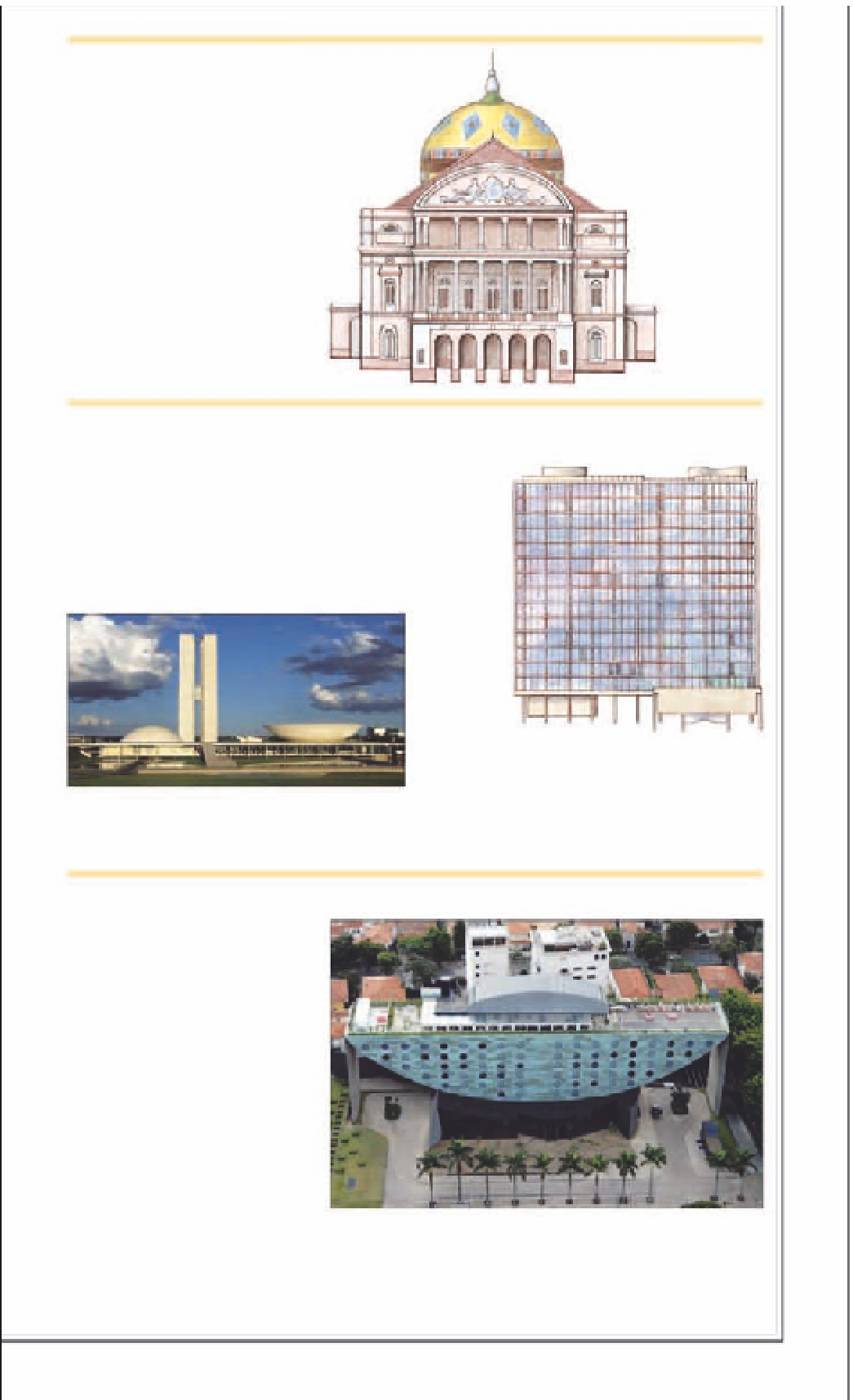Travel Reference
In-Depth Information
ECLECTIC
Eclecticism is an architectural
style associated with 19th-
century Republican Brazil. Like
the styles that preceded it, it
was strongly influenced by
European trends, particularly
French and English. Eclecticism
is characterized by a com-
bination of forms, motifs, and
styles from Neo-Classical and
Baroque through to Manueline,
a style that fuses together in
one building Portuguese Late
Gothic with ornamentation in
portals, windows, and arcades,
along with Oriental elements.
Teatro Amazonas's
façade
is
rich with forms, motifs, and
details selected from different
historical periods and
architectural styles.
Mock-
Byzantine
decorative
cupola
Neo-Classical
frieze
Windows
fusing the
Palladian
style with
Brazilian
Baroque
MODERNIST
Modernism was shaped by architects
such as Le Corbusier and Max Bill. Brazilian
architects at first adhered to the strict
precepts these Europeans laid down, but
from the 1940s, architects such as Oscar
Niemeyer developed a unique form of
Brazilian Modernism, influenced by indig-
enous design and employing curved forms.
Le Corbusier
canopy style
Brise-soleil
façade
The Ministry of Education
, built in
Rio in 1943 with a striking glass
brise-soleil
façade, was the first
Modernist building to combine civic
architecture with a contemporary
medium in the Americas.
Parliament buildings
, in Brasília, are a harmony
of simple lines and curves incorporating water
and the landscape into the design.
CONTEMPORARY BRAZIL
Beyond Brasília and Oscar
Niemeyer's continued output in
Rio and Curitiba, contemporary
Brazilian architecture is largely
functional and not particularly
inspiring. Cities are seas of
identical tower-block flats
broken by snaking highways.
The most daring designs tend
to be private homes hidden
away behind high walls or
corporate buildings such as
Ruy Ohtake's stunning Hotel
Unique
(see p374)
and Hotel
Unique Garden in São Paulo.
Open-air Skye Bar
Glass set windows
Concrete pillars
supporting the hotel
Hotel Unique
is a combination of bravado and functionalism.
Built by Ruy Ohtake, a leading figure in contemporary
Brazilian architecture, the inverted arc has 3-ft (1-m) wide
windows overlooking a stunning garden. The open-air rooftop
bar has a spectacular view over the city.
Landscaped garden














































